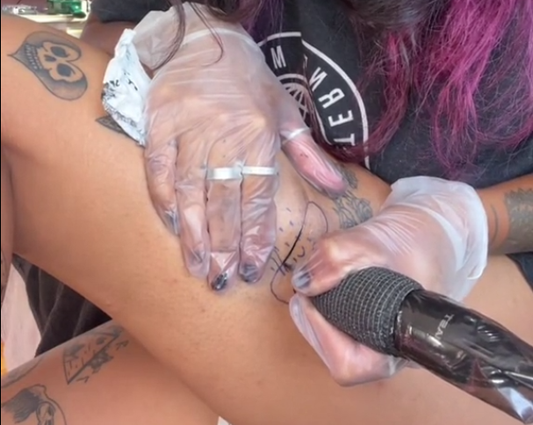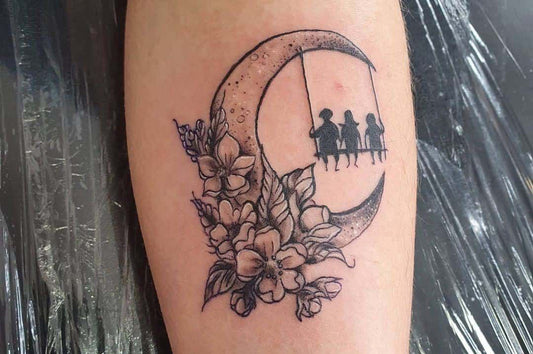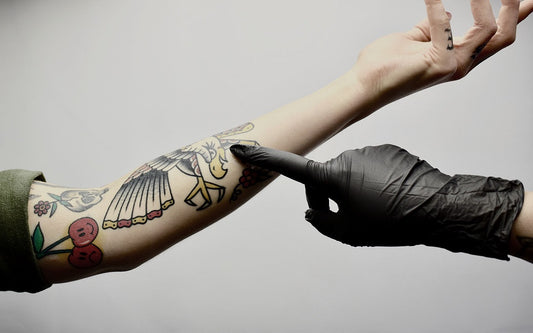
How to Shade Tattoos for Beginners?
Would you like to learn how to make beautiful realistic tattoos like the best tattoo artists? The art of tattooing includes shading, which allows you to make a tattoo three-dimensional and volumetric.
Throughout our article, we explained four common shading techniques, methods of practicing them, a guide to choosing needles and setting up a tattoo machine, preparing a sketch, and the shading process itself.
Reading Guide
1. 4 Tattoo Shading Techniques
2. Tattoo Shading Practice Methods
3. Preparing to Shade a Tattoo
4. Tattoo Shading Process Tips
5. Summary
Please check the details below:
1. 4 Tattoo Shading Techniques
If you are a beginner tattoo artist who is trying to learn how to create quality and beautiful tattoos, shading is one of the first steps to learn. As a result, the tattoo will appear more realistic and voluminous. Various styles use it, including 3D, watercolor tattoos, realism, etc. We will tell you about the most popular shading techniques, their appointments, and their differences below. Best tattoo kits for beginners.
(1) Packing
Used for: Mostly for solid-colored areas
Can be performed using: Shaders such as magnums or rounds
How to do it: Make small tight circles in a controlled manner at a 45-degree angle
(2) Whip shading
Used for: Almost all tattoo styles can use it. Most often, it is used to apply sketches of flowers and animals. The effect is similar to that of a pencil drawing.
Can be performed using: The needles you prefer (tattoo artists usually use 3 round liners)
How to do it: Make a quick curve with the hand as the tattoo machine is almost vertical, reducing the force of pressure as you move.
(3) Brush shading
Used for: Suitable for portraits and soft blending
Can be performed using: The best needle to use is a long taper needle
How to do it: Maintain the tattoo machine's position. In a pendulum motion, go down, enter the skin, and come back up.
(4) Stipple shading
Used for: A dotted effect can be created
Can be performed using: Three-round liner with a long taper
How to do it: This technique can be applied in several ways: by whipping or brushing. The voltage and speed of the hand movement are very important in this technique. The higher the voltage, the faster your hand movements must be. The faster you move your hand, the farther the dots will be.
2. Tattoo Shading Practice Methods
If you are just learning shading techniques, we recommend not practicing them on the body, as this increases the risk of injury. In order to learn to shade, the following methods will be very helpful.
Method 1. Practice using paper and pencil/paints/marker
Drawing sketches on paper will not only help you work out in more detail the shading technique you like, practice movements and their speed to achieve the desired effect but will also teach you how to distribute shadows correctly in a drawing, allowing you to create a tattoo that's irresistible in the future.
Method 2. Practice using fake skin or pigskin
Practicing shading techniques on fake skin or pigskin is the next step to perfecting them.
Since pigskin is closest to human skin, you can work out the pressing force, choose the voltage that is convenient for you, choose the right needles, and work out the tattoo machine as well as hand movements to achieve the perfect shading.
As silicone skin is available in various sizes, thicknesses, and body parts, it is also a great option for shading practice.

3. Preparing to Shade a Tattoo
Prepare the necessary equipment and a sketch before you begin shading. A detailed description of each stage of preparation will also be provided.
a. Choosing the needles
Tattoo needles such as round tattoo needles and magnum needles are often used for shading. We will explain each of these groupings of needles in more detail below.
There are two types of round tattoo needles: round liners (RL) and round shaders (RS). They are perfect for lining work, shading, fill-in, and so on, since they are tightly grouped and arranged in a circle. The needles in round shaders are located more freely, which makes them a good choice for shading, transitioning, and coloring.
It is recommended that needles should not be wider than 1 mm when shading.
A two-row arrangement of magnum needles is used. Denser needle tips are called stacked magnums (M2), while looser tips are called weaved magnums (M1).
For color packing and shading, stacked magnums are good, and weaved magnums are also good, but they are better suited for large areas.
b. Setting Up a Tattoo Machine for Shading
- The distance between the armature bar and the contact screw should be about 2 mm for shading.
- The tattoo machine should be equipped with a needle and tube. The needles should be selected based on the shading technique that you plan to perform, and the tube should be selected based on the selected needle.
- If you want to shade, lower the tattoo machine's speed than if you want to line. A tattoo machine should be adjusted by ear (tuning to the lining should result in a deeper buzz) to a speed that is comfortable for you.
c. Creating a Sketch
Drawing a sketch according to the client's wishes is one of the most important points. Think ahead and draw shadows, transitions, and intensity on the sketch if your customer wants a tattoo that includes shading. Choose the hues for shading the tattoo if it will be colored.
4. Tattoo Shading Process Tips
Before you start shading, make outlining and take a break. Outlining and shading are usually done in one day (with a short break of 15-20 minutes) or divided into two sessions (the break is usually several weeks so the contour has time to heal).
- Put on gloves, and prepare sterile instruments, and needles if necessary.
- Make sure the skin is prepared for tattooing. Prepare the area for shaving by cleaning and shaving it.
- The tattoo machine should be set up, the needles inserted, and the shading speed adjusted to your preference.
- When shading, use Vaseline. When using multiple shades in a tattoo, it prevents color mixing by protecting and lubricating the skin.
- Excess ink should be removed. Your shading will be clearer if you do this, as well as you will be able to avoid mistakes.
- During the shading process, clean the needles as you move to lighter areas. In this way, you will be able to achieve your goals.
5. Summary
In order to become a tattoo artist who can fulfill any client's dream in life, you must learn and practice shading.
We recommend that you learn various shading techniques, such as whip shading, packing, brush shading, and stipple shading. The next step is to practice chosen techniques using paper and a pencil/marker, or on a pig or fake tattoo skin. Next, you need to understand the different types of needles, as well as how to set up a tattoo machine and its speed. Then, you just need to create a tattoo sketch based on the client's ideas.
Having studied all these steps carefully, you will be able to perform shading at the highest level.










